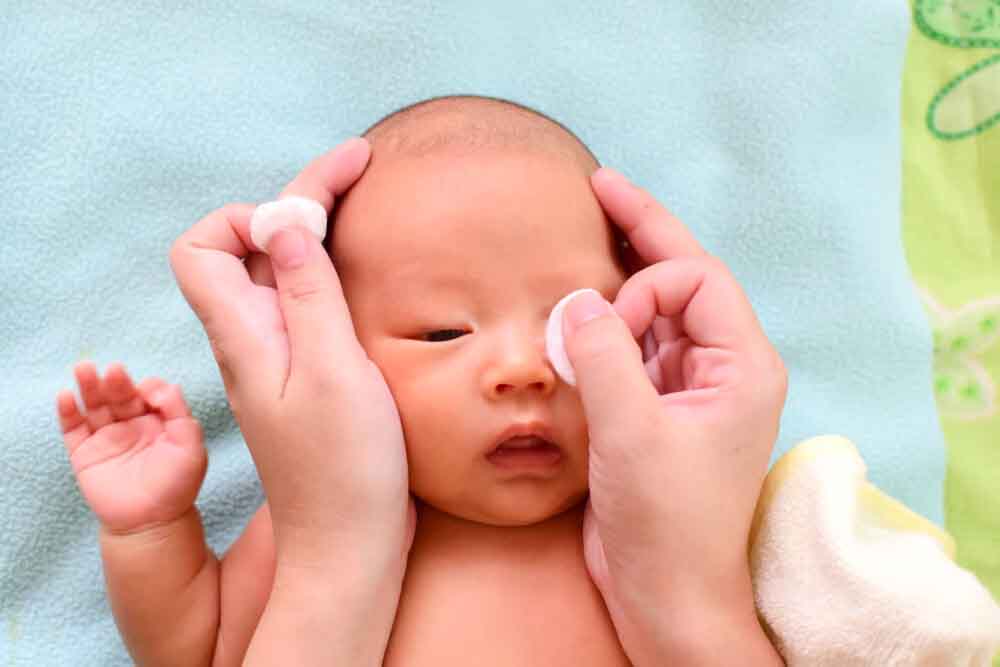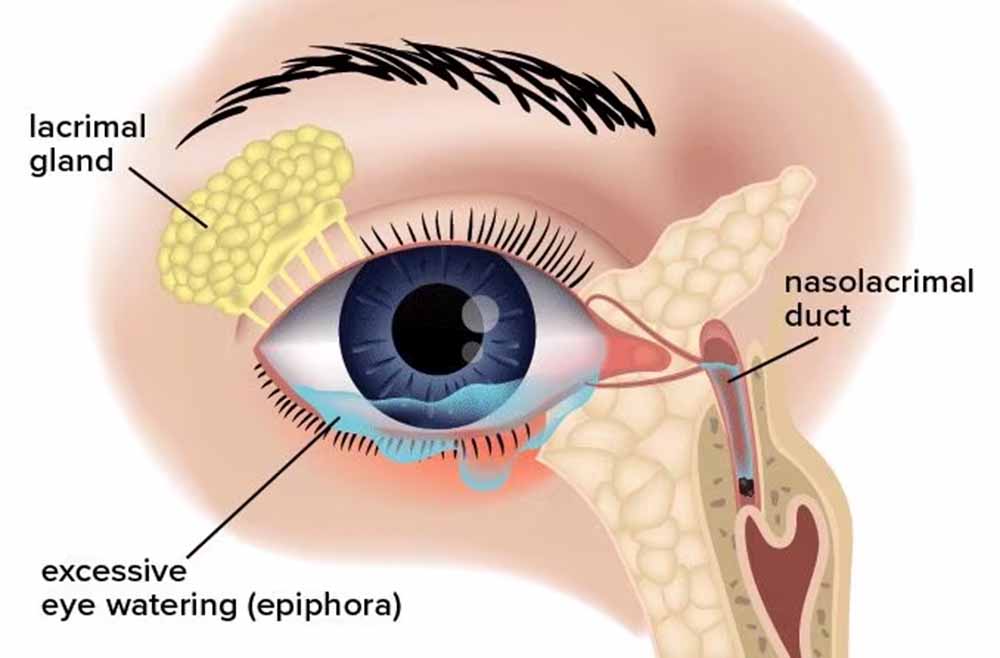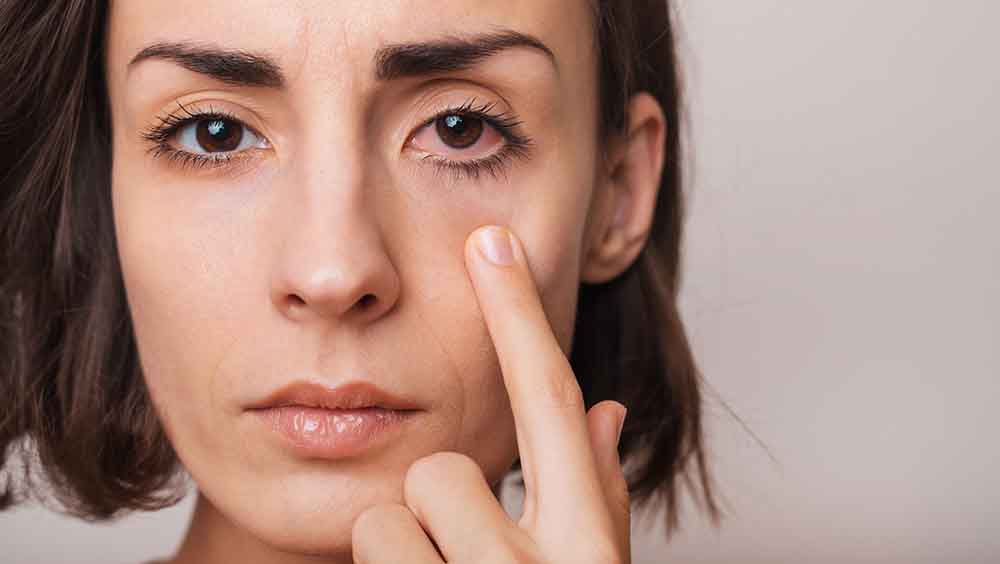Lacrimation or tear production is a natural process of the eyes to keep them clean, clear, and healthy. Ophthalmologist Dr Archana Iyer, DNB, FLVPEI (glaucoma) helps us understand why our eyes water and when the situation needs medical attention.
Lacrimation may be:
• Basal – Basic tear production that helps to keep the eye moist and clean.
• Reflex – Tear production when the eye is injured, irritated, or in pain.
• Emotional/psychic
‘Epiphora’ is the term used to describe excessive watering/lacrimation. It occurs either due to overproduction of tears (though this is rare) or inadequate drainage of tears, resulting in their excessive collection and consequent spilling over the cheeks.

The Cause
• Predisposition in babies and the elderly: Epiphora is common in children under two and the elderly. Blockage of tear drainage is common in babies as their tear ducts are not fully developed. Overproduction of tears and eyelid malposition are typically seen in the elderly.
• Gender: More than men, women are predominantly affected due to the narrow lumen of the tear duct.
• Heredity: This plays an indirect role as it affects the facial configuration, and in turn the anatomy of the tear duct.
Overproduction of tears
• Conjunctivitis (pink eye) caused by allergies or infection
• Chemical or fume exposure
• Irritation caused by:
o Infection involving the black portion of the eye (cornea)
o Dysfunction of meibomian glands in the eyelids
o Lump on the edge of the eyelid (chalazion or stye)
o Inflammation or infection of eyelashes (blepharitis)
o Facial nerve palsy
o Entropion or the lower eyelid folding inwards, causing the eyelashes to rub against the cornea (black portion of the eye)
o Ectropion or the lower eyelid laxing away from the surface of eye causing spillage
o Trichiasis or eyelashes growing inward, causing them to rub against the cornea and subsequent irritation
Inadequate drainage of tears caused by a blocked tear duct

Symptoms
• Overly moist eyes
• Pooling of tears in the eye resulting in the blurring of vision
• Spillage of tears over the cheeks
• Infection and swelling due to stasis of secretions causing pain and purulent discharge, a condition known as ’Dacryocystitis’.
When left unattended, this can cause the spread of infection to other parts like the eyelids, bony cage protecting the eyeball, sinusitis and in rare occasions, can spread to the brain. Generalised septicaemia may also develop.

When to see a doctor?
Epiphora, though inconvenient, is not a serious condition. However, a doctor’s opinion should be sought when any of the following symptoms develop in addition to watery eyes:
• Pain in and around the eyeball
• Redness
• Persistent unilateral / bilateral watering causing blurring of vision
• Foreign body sensation
• Sticky discharge and matting of eyelashes
The doctor elicits a detailed history and conducts a physical examination of the patient using a slit lamp microscope to evaluate the cause of epiphora. Along with a tear film examination, and the patient may also be advised to undergo certain tests like syringing and probing, dacryocystography, CT scan or MRI depending on their condition to arrive at a diagnosis.

Management
Appropriate management of epiphora depends upon etiology. For mild cases, only watchful waiting and monitoring the patient’s progress may be recommended.
• Irritation: Epiphora due to infective causes like conjunctivitis and corneal ulcer can be treated by prescribing antibiotic eyedrops after examination. Epiphora due to lid disorders like ectropion and entropion may need surgical correction.
• Allergies: Watery eyes due to allergies is often seasonal. It is advisable to avoid known allergen triggers such as pollens during spring. Medications can help relieve watery eye and allergic symptoms. Anti-allergy drugs help mitigate an overactive immune response and offer relief from symptoms. These include:
o Antihistamine eye drops
o Decongestants
o Steroid eye drops (has long term side effects, must be used only after consultation with a doctor)
o Lubricants
• Blocked tear drainage system: The nasolacrimal ducts need surgical correction.
• Epiphora in babies: If secondary to nasolacrimal duct obstruction, it can be successfully managed until nine months of age with a simple massage at home. The mother is educated regarding the technique during her consultation with the doctor. Children older than a year may have to undergo certain surgical procedures to cure the problem.
There may not be a full-proof method to prevent watery eyes, but proper protective equipment in form of goggles should be worn when one engages in any work or activity that can hurt the eyes. If possible, avoid allergy triggers. Consult your doctor at the earliest when you experience any of the symptoms mentioned above. Early diagnosis and prompt intervention can provide clarity, relief and prevent complications.
Image source: All about vision, Flohealth, Media.self.com